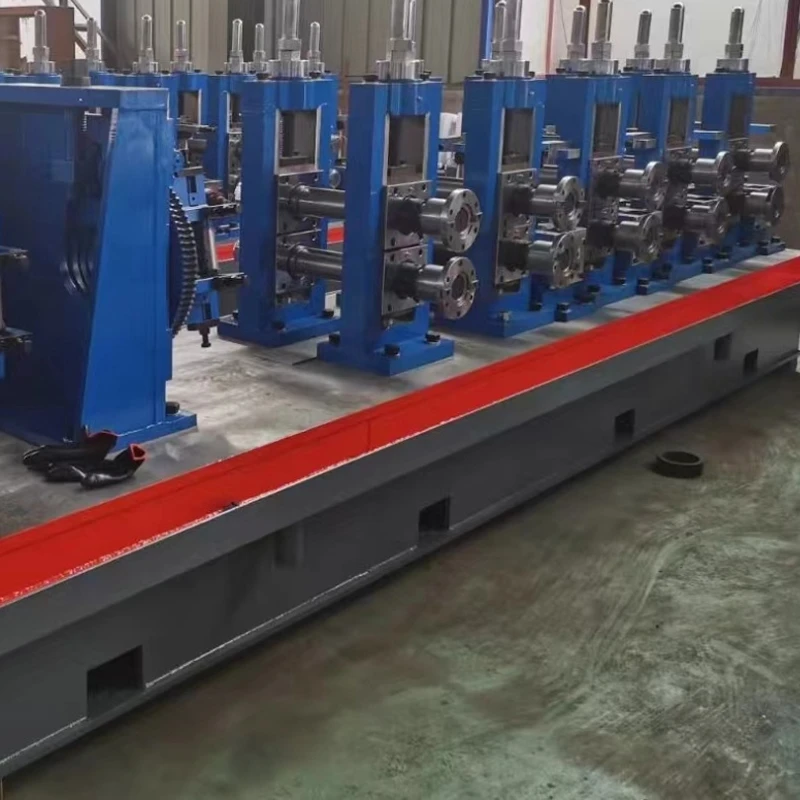six high rolling mill
The Six-High Rolling Mill Revolutionizing Metal Processing
The six-high rolling mill technology represents a significant advancement in the field of metal processing, offering enhanced efficiency and versatility in producing high-quality metal products. This type of mill is particularly beneficial in industries where the manufacture of thin sheets or complex shapes from metals is required. This article delves into the design, operational principles, benefits, and applications of six-high rolling mills, emphasizing why they are a key tool in modern manufacturing.
Understanding the Six-High Rolling Mill Design
The six-high rolling mill comprises six rolls arranged in a unique configuration. Unlike traditional four-high mills, which have two work rolls and two backup rolls, the six-high variant includes an additional pair of rolls. The arrangement typically consists of two outer backup rolls and four inner rolls - two work rolls and two smaller rolls known as Intermediate Rolls. This design allows for more effective support of the thinner work rolls while accommodating the deformation of the metal being processed.
The primary feature of the six-high design is its ability to reduce the thickness of the metal without excessive pressure, thereby minimizing the risk of defects such as surface tearing. This capability is particularly advantageous when working with materials like stainless steel, aluminum, and other non-ferrous metals, where maintaining the integrity of the surface is crucial.
Operational Principles
The operational principles of a six-high rolling mill revolve around the application of pressure and temperature to achieve the desired material properties. The rolls rotate in a synchronized manner, applying significant force to the material passing through the gap between the rolls. The combination of heat and pressure alters the microstructure of the metal leading to the desired thickness, strength, and surface finish.
Temperature control is vital in the rolling process. The mill can operate at various temperatures depending on the specific material being rolled and the desired final properties. Hot rolling, for example, is used to shape metals at high temperatures, while cold rolling processes occur at or near room temperature to achieve greater precision.
Advantages of Six-High Rolling Mills
six high rolling mill

One of the most significant advantages of six-high rolling mills is their ability to produce extremely thin gauges of metal. Traditional rolling mills often struggle to achieve these specifications without compromising the quality of the end product. The design of the six-high mill mitigates the risks associated with handling thin materials, such as warping or excessive roll wear.
Furthermore, six-high mills exhibit improved energy efficiency. The ability to roll thinner sheets requires less energy compared to thicker rolling processes, making this technology more sustainable and cost-effective. The reduced energy consumption and material spoilage lead to lower operational costs and a smaller environmental footprint.
Additionally, the versatility of six-high rolling mills allows for a wide range of applications. They are ideal for manufacturing products that demand precision, such as automotive components, electronic parts, and various architectural elements.
Applications in Various Industries
Six-high rolling mills find applications across diverse industries. In the automotive sector, they play a crucial role in producing high-precision sheet metal used for body panels and structural components. Similarly, the aerospace industry relies on this technology to create lightweight yet strong materials essential for aircraft performance.
The electronics industry benefits from six-high mills as well, particularly in the production of refined metal foils used in capacitors, connectors, and circuit boards. The unique properties that can be achieved through careful manipulation of the rolling process enable manufacturers to meet the stringent requirements for modern electronic devices.
Conclusion
In conclusion, the six-high rolling mill stands as a testament to the advancements in metal processing technology. With its innovative design, operational efficiency, and wide-ranging applications, it has secured its place as an indispensable tool in various manufacturing sectors. As industries continue to demand higher quality and precision, the six-high rolling mill is poised to lead the way in meeting these challenges, ensuring that manufacturers remain competitive in a global market. By integrating this technology, companies can achieve operational excellence while adhering to sustainability goals, making the six-high rolling mill a cornerstone of modern metal processing.
-
High Frequency Straight Seam Welded Pipe Production Line-BzZhou Xinghua Machinery Equipment Manufacturing Co., LTD.|line pipe steel&welded gas pipeNewsJul.30,2025
-
High Frequency Straight Seam Welded Pipe Production Line-BzZhou Xinghua Machinery Equipment Manufacturing Co., LTD.|High Precision&Automated SolutionsNewsJul.30,2025
-
High Frequency Straight Seam Welded Pipe Production Line - BzZhou Xinghua Machinery Equipment Manufacturing Co., Ltd.NewsJul.30,2025
-
High Frequency Straight Seam Welded Pipe Production Line-BzZhou Xinghua Machinery Equipment Manufacturing Co., LTD.|Precision Welding, High EfficiencyNewsJul.30,2025
-
High Frequency Straight Seam Welded Pipe Production Line|BzZhou Xinghua|Precision Welding&EfficiencyNewsJul.30,2025
-
High Frequency Straight Seam Welded Pipe Production Line - BzZhou Xinghua|Precision Engineering&EfficiencyNewsJul.30,2025


